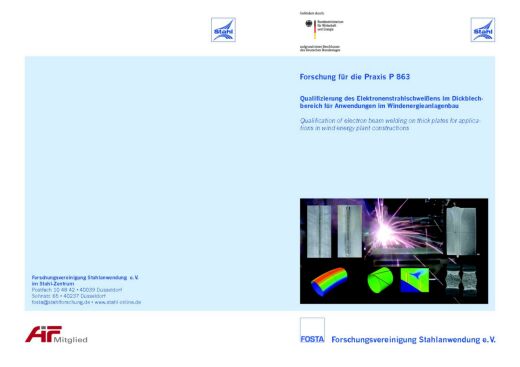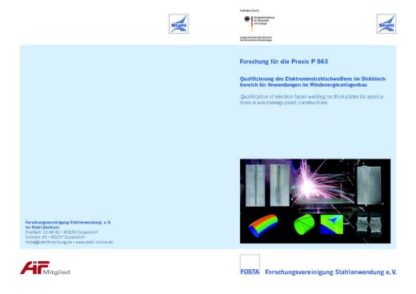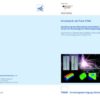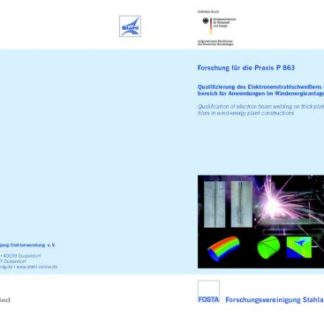Description
P 863 – Qualification of electron beam welding on thick plates for applications in wind energy plant constructions
In concern of the European Energy Policy the German government decided on increasing the ratio of renewable energy to up to 20% until 2020. To support this goal, among other new offshore wind farms shall be built in the North Sea. The construction of wind parks includes a variety of challenging factors, as the foundation structures are anchored at water depths of up to 50 m in the ocean bed. The foundation structures are therefore not only objected to dynamic loads caused by the turning of the wind mills but also to the tide. Consequently, a steel structure of up to 900 t is chosen to ensure the structural integrity of the foundation structure. With the application of the current guide lines, the joining of the pipe segments with an overall weld seam length of up to 1230 m turns out to be an extensive and time consuming process.
According to the existing guide lines the joining of the pipe segments in the foundation structures of such wind energy plants is carried out by using submerged arc welding (SAW). In contradiction to the SAW, the electron beam welding (EB welding) provides a high welding penetration depth at high energy utilization. Hence, pipe segments with a thickness of 100 mm can be joined in one single process step, which provides a great time advantage compared to the SAW process. Within the scope of this project, the EB welding is optimized by developing an economical process window. Furthermore, for a further increase in the supplied toughness of the weld seams the use of different filler materials, i.e. aluminum and nickel, are investigated, whereas especially aluminum influences the development of the low temperature toughness positively.
Moreover, the structural integrity of the foundation structures is investigated by means of fracture mechanics concepts. Thereby, in a first step the supplied toughness is tested and further whether the toughness of the weld seams meets the construction requirements. Alongside the weld seams of structural steels with moderate strength, i.e. an S355 steel grade, also the weld seams of high strength steels (HSS), i.e. an S460 steel grade, are investigated. The advantage of HSS grades compared to conventional steel grades consists in the possibility of minor gauges in the plate thickness. The according material savings result in a faster processing of the EB welding. In addition to theoptimized EB welding process the toughness behavior over the plate thickness in the EB weld seams is further increased. Other than the optimization of the weld seam quality, the production time of the foundation structures is reduced.
The supplied toughness of the weld seams of the used steel grades shall serve as a motivation to reconsider the conventional design of foundation structures of wind energy plants on the basis of historically grown minimum toughness values and a set material thickness. In addition, in terms of economic reasons it is essential for future constructions of foundation structures to establish the EB welding process and high strength steel grades in the conventional German and European guide lines.
The research project (IGF-Nr. 372 ZN) was carried out at Institut für Eisenhüttenkunde, RWTH Aachen and at Institut für Schweiß- und Fügetechnik, RWTH Aachen. FOSTA has accompanied the research project work and has organized the project funding from the Federal Ministry of Economics and Technology through the AiF as part of the programme for promoting industrial cooperation research (IGF) in accordance with a resolution of the German parliament.
Only available in german language.
Authors:
U. Reisgen, S. Olschok, S. Ufer, W. Bleck, S. Münstermann, G. Golisch
Published in:
2015




